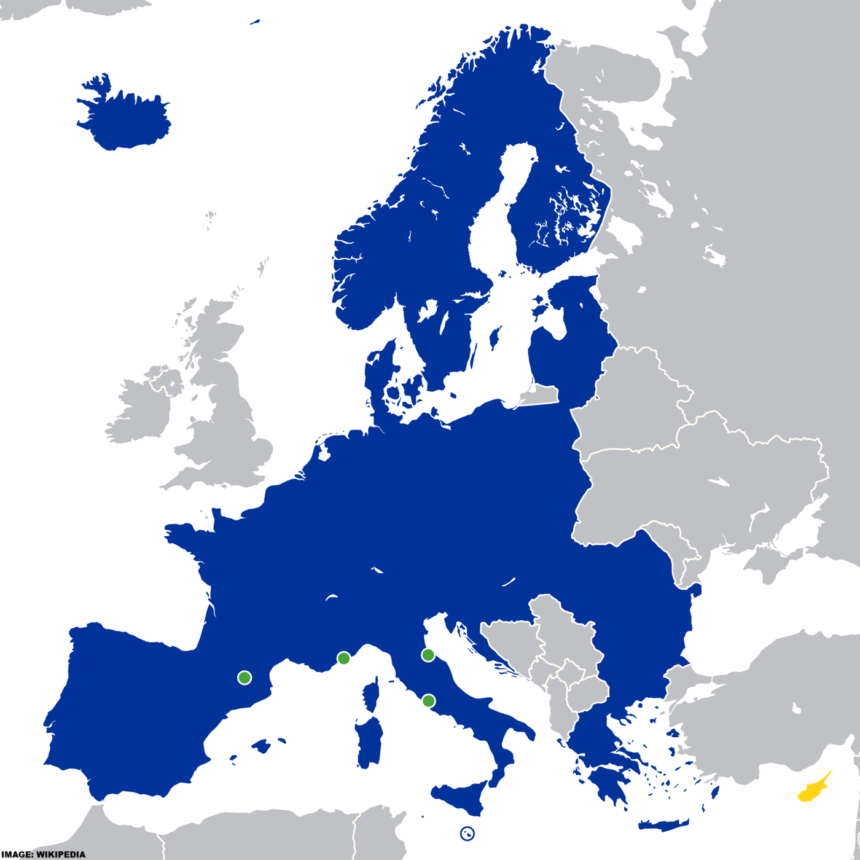Since January 1, 2025, Romania and Bulgaria have become fully part of the Schengen Area. This means there are no internal border controls when traveling to/from these two countries and other Schengen participants.

When flying to/from Bulgaria & Romania, and other Schengen countries, the border controls were abolished in March 2024, but land border checks stayed in place.
Currently, two EU countries, Ireland and Cyprus, are not part of Schengen.
Ireland has its Common Travel Area with the UK, and the situation with Cyprus is complicated, as the island’s Northern part is under Turkish control.
Iceland, Norway, Liechtenstein, and Switzerland are not part of the EU, as they belong to the EEA (European Economic Area), but are part of Schengen.
Then there are a few small city-states, such as San Marino and Monaco, that are effectively in Schengen, although not officially part of it.
EU’s Announcement:
Statement by the European Commission on the occasion of Bulgaria and Romania becoming fully part of Schengen
The Commission welcomes today’s unanimous decision by the Council to lift internal land border controls with Romania and Bulgaria as of 1 January 2025. This important step completes the full entry of both countries into the Schengen area. This not only strengthens the Schengen area but it will further strengthen the internal market, increase travel, trade and tourism. A robust Schengen area reinforces the EU’s unity and makes the EU stronger at a global scale.
Today’s decision means that as from 1 January 2025, citizens can travel without land border controls to and between Bulgaria and Romania.
Since last December, when the Council decided to welcome Romania and Bulgaria into the Schengen area, both Member States have taken all necessary measures to ensure a smooth application of the Schengen rules as from 31 March 2024. On that date, the controls at the internal air and sea borders were lifted and the Schengen rules started to apply including on issuing Schengen visas.
The Cooperation Frameworks that the Commission launched in March this year with Bulgaria and Romania build on the successful implementation of the pilot projects for fast asylum and return procedures. Both countries will further support joint European efforts to address EU security at the EU’s external borders and tackle migratory challenges. The Commission will also continue to offer financial support and Frontex assistance to both Member States.
As pointed out in the 2024 State of Schengen report, Schengen stands strong and remains the most visited destination in the world. Guaranteeing smooth and secure travel to a region with a population of almost 450 million people, the Schengen area is essential for the European Union, its people and its businesses. With Bulgaria and Romania now fully part of Schengen we are making another crucial step to build a strong and connected Union.
Conclusion
It is a breeze to travel between these Schengen countries in Europe, whether by land, air, or maritime, as there are no border checks in place beyond some special events.
Airlines still often want to see your ID, but this is purely for revenue control, as there is no requirement to show anything officially. With many airlines, you board just using the automated gates anyway.
There are some peculiarities if you want to travel to places such as Faroe Island, as it is not part of Schengen but is part of the Nordic Passport Union. Greenland is not part of the Schengen or Nordic Passport Union but has an open border with Nordic countries.







